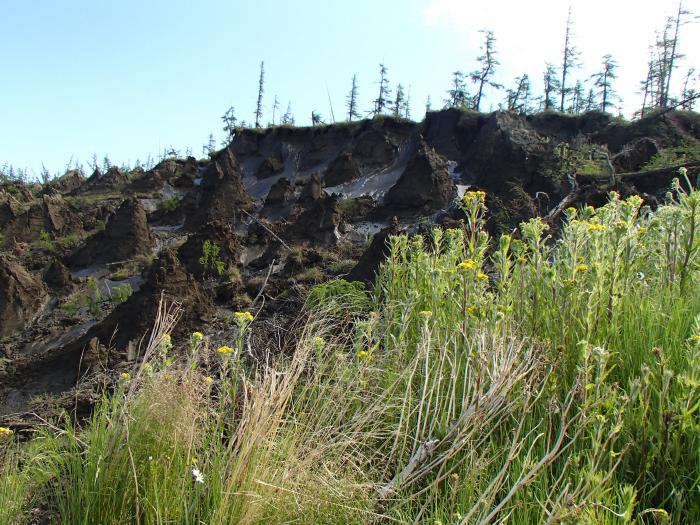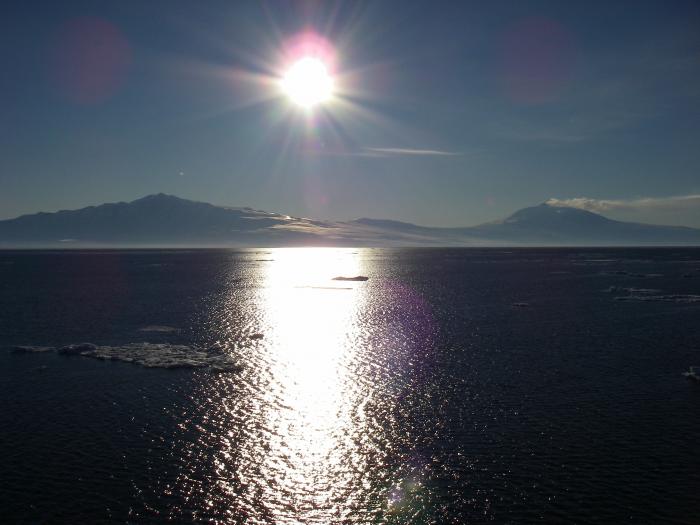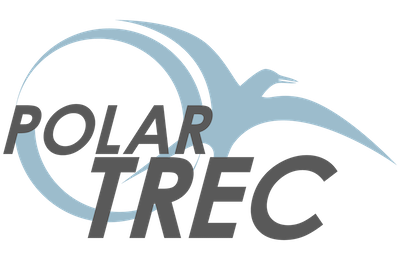"You Must Learn...Let Me Demonstrate the Force of Knowledge" KRS One
As the sun sets behind the evergreen trees outside my hotel room in Fairbanks, Alaska, my eyelids begin to droop as my head swirls with new information about permafrost, land ice vs. sea ice, and green polynyas.
 Sunset on the second night of PolarTREC orientation
Sunset on the second night of PolarTREC orientation
New Words from the Experts
Permafrost and polynyas...what in the world are those? Yesterday, in addition to more technology checklists and further details about expectations, we had the privilege to hear from two PolarTREC researchers. Jeremy May, who has been researching plants in the Arctic, and Tish Yager, who has focused on phytoplankton productivity in Antarctica, provided us with a sense of place and an idea of what research is like in the polar regions.
Phenology and Permafrost with Jeremy May
Jeremy taught us about the impacts of the loss of sea ice.
LESS SEA ICE=MORE OPEN WATER=MORE HUMIDITY=WARMER TEMPERATURES=IMPACT ON PLANTS
The land in the Arctic has a layer of permafrost just under the active layer of soil. Permafrost is a layer of permanently frozen soil. It contains massive amounts of carbon!! In the Arctic the warmer temperatures, due to the loss of sea ice, affect the timing and speed of melting on the land. This means spring comes early in the Arctic and plants have a longer growing season. Jeremy and his team are studying the phenology of plants in the Arctic. Phenology means the study of the seasonal cycles of living things and the influence of other environmental factors on those cycles. Want to know more about tundra plants, permafrost, and phenology? You'll have to check out Jeremy's research and follow PolarTREC educator and classroom teacher extraordinaire Alejandra Martinez to find out more!
 "Mark Paricio: "Although beautiful, the thawing permafrost cliffs of Duvanny Yar pose considerable risk to travelers." Duvanny Yar, Russia." Photo by Mark Paricio (PolarTREC 2012), Courtesy of ARCUS
"Mark Paricio: "Although beautiful, the thawing permafrost cliffs of Duvanny Yar pose considerable risk to travelers." Duvanny Yar, Russia." Photo by Mark Paricio (PolarTREC 2012), Courtesy of ARCUS
Polynyas and Phytoplankton with Tish Yager
Tish gave us some quick facts about Antarctica:
- there has never been a war there
- the environment is fully protected
- scientific research has priority-as long as we maintain the Antarctic Treaty, that is
Tish also shared the research she conducted on her latest expedition to Antarctica:
SEA ICE + GLACIAL MELT=INCREASED PHYTOPLANKTON (plant-like plankton) BLOOMS
In the Amundsen Sea Embayment , which is on the west side of Antarctica, there are polynyas at the edge of glacial ice sheets. Polynyas are pools of open water that are surrounded by ice. These polynyas are great places for phytoplankton to live! Phytoplankton are plant-like plankton-small living things that move with the currents and are the basis of the ocean food web. Want to know how glacial ice melt, due to warming temperatures, are impacting phytoplankton? Check out Tish Yager's Expedition!
 Western edge of the Ross Sea Polynya in Antarctica Photo by Jeff Peneston (PolarTREC 2008/2009), Courtesy of ARCUS
Western edge of the Ross Sea Polynya in Antarctica Photo by Jeff Peneston (PolarTREC 2008/2009), Courtesy of ARCUS
Despite my tiredness, and my brain feeling slightly full, there is an excitable stirring inside of me that is ready to absorb more information and wishes I was in Antarctica right now. I'm only beginning to understand the complexities of the connected ecosystems that make up the polar regions and I am eager to learn more!
FUN FACT: more knowledge to drop
With the KRS One lyrics at the top of the entry rolling through my mind, which always seem to repeat over and over whenever I'm learning new information, I am reminded to acknowledge and celebrate the first African-American in Antarctica. George Washington Gibbs, Jr. arrived by boat on the Ross Ice Shelf on January 14, 1940 becoming the first African-American to set foot on Antarctica. Check out this Smithsonian article where you can read more about his adventures, including falling into a cravasse and getting disoriented in the fog while collecting penguins, and frustrations, like racism on the ship and long working hours as a mess attendant, the only job he could get on the ship due to his race: George Washington Gibbs Jr. Defied Danger and Racism to Become the First African-American to Visit Antarctica


Comments
Add new comment